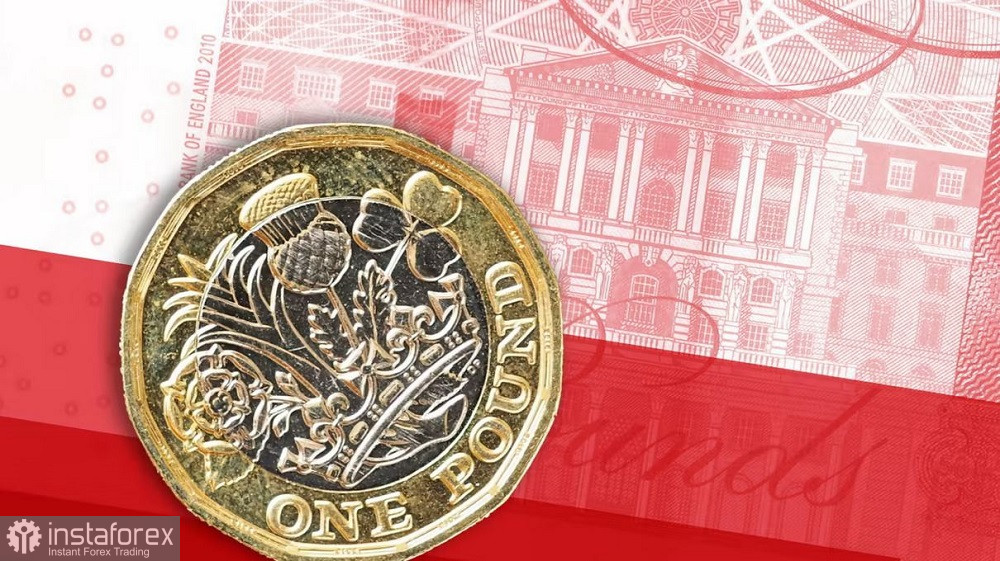The GBP/USD pair updated its 2.5-year price high on Thursday, reacting to the results of the September meeting of the Bank of England. For the first time since March 2022, the pair tested the 1.33 level, reaching 1.3313. Although the pound could not hold this price area, bullish sentiment continues to dominate the GBP/USD pair. Amid the broad weakness of the greenback, the pound received substantial support from the English central bank on Thursday.

First, leading up to the September meeting, the fundamental backdrop for the GBP/USD pair was quite contradictory. The UK's GDP in July showed zero growth, and the average wage growth rate slowed to 4.0% (the weakest growth rate since December 2020). The number of unemployment benefit claims increased by 29,000. On the one hand, this is a high figure (compared to the beginning of the year), but on the other hand, the forecast was for 95,000. In the previous month, the figure had jumped to 102,000.
In other words, the UK's labor market and economic growth rates did not support the BoE's hawkish stance.
However, the inflation report released on Wednesday reintroduced some intrigue regarding the outcome of the BoE's September meeting. The report was generally in line with expectations but reflected stagnation in overall inflation and an acceleration in core inflation. The annual Consumer Price Index (CPI) in August was 2.2%, the same as in July. Before that, in June and May, inflation was within the target range at 2.0%. So, overall inflation has once again (for the second consecutive month) exceeded the target range.
Meanwhile, the core CPI accelerated to 3.6% year-on-year, the strongest growth rate since April. The Retail Price Index (RPI), which employers use to discuss wage issues, slightly decreased (to 3.5% from 3.6%) but still remained near multi-month highs.
This outcome was reflected in the results of the BoE's September meeting. Although the central bank followed the basic and most anticipated scenario by keeping all monetary policy parameters unchanged, the pound received significant support. As they say, the devil is in the details.
The voting results on the interest rate were a key factor in favor of the British currency. Most experts expected seven out of nine members of the Committee to vote to maintain the rate. However, the actual result was different: 0-1-8. That means zero votes for a rate hike, only one vote for a rate cut, and eight for maintaining the wait-and-see stance. Only Swati Dhingra remained in the "dovish camp," consistently advocating for easing monetary policy. The rest supported the status quo.
Moreover, the BoE used "moderately hawkish" language in its accompanying statement, signaling that it would lower rates very gradually ("we need to be careful not to reduce rates too quickly or too much").
BoE Governor Andrew Bailey echoed similar sentiments. According to him, the interest rate will continue to decrease, but for the next step in that direction, central bank members "need additional evidence." In particular, they need proof that inflationary pressure is easing and the national economy is growing. Overall inflation is stagnating (above the target level), and core inflation is accelerating.
In other words, the outcome of the September meeting suggests the following conclusion: the BoE has remained within its path of monetary policy easing. However, it declared a moderate pace of easing – according to some analysts, rate cuts will happen "no more than once per quarter."
The U.S. Federal Reserve, in contrast, has declared a proactive and aggressive pace of rate cuts. Starting with a 50-basis-point cut, the Fed members indicated that they would lower the rate by a similar amount before the end of the year. The BoE almost seems hawkish compared to the Fed.
Thus, the rise in GBP/USD is justified and reasonable. However, long positions should be treated with great caution now. Notice that despite impulsive price surges, buyers of the pair have not been able to break above the resistance level of 1.3270 (the upper line of the Bollinger Bands indicator on the daily chart) – neither on Wednesday nor Thursday. Although, in general, the technical picture favors long positions: the pair is situated on all the higher time frames (H4, D1, W1, MN) at or between the middle and upper lines of the Bollinger Bands indicator and above all lines of the Ichimoku indicator. However, it is advisable to open longs only after the price consolidates above the 1.3270 target.
 English
English 
 Русский
Русский Bahasa Indonesia
Bahasa Indonesia Bahasa Malay
Bahasa Malay ไทย
ไทย Español
Español Deutsch
Deutsch Български
Български Français
Français Tiếng Việt
Tiếng Việt 中文
中文 বাংলা
বাংলা हिन्दी
हिन्दी Čeština
Čeština Українська
Українська Română
Română

